
For enthusiasts of both technology and motorsports, the Pixel 3XL F1 2019 image collection showcases a unique intersection. These images capture the high-speed thrill of Formula 1 racing through the lens of Google’s Pixel 3XL smartphone, highlighting its capability to produce stunningly clear and vibrant photographs even in fast-paced environments. It’s an impressive testament to how far smartphone photography has come, allowing fans to relive the excitement of the 2019 F1 season with remarkable clarity.
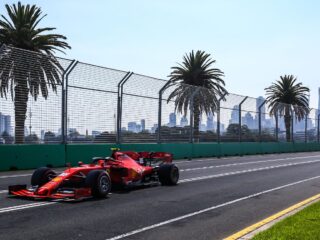
These images not only serve as a celebration of technological advancement in mobile photography but also offer an immersive experience into the world of F1 racing. They bring fans closer to the action showing just how effectively a device that fits in your pocket can document one of the most visually demanding sports in existence.
Pixel 3XL F1 2019 Image
Overview of the Pixel 3 XL
Launched into the tech arena by Google, the Pixel 3 XL quickly garnered attention for its sleek design and powerful performance. It’s equipped with a Snapdragon 845 processor, ensuring smooth operation across applications. The device boasts a generous 6.3-inch QHD+ display that brings visuals to life with stunning clarity and vibrant colors. With up to 128GB of storage, users have ample space for apps, media, and documents. Its standout feature, however, is arguably the camera. Google leveraged advanced software to enhance photography capabilities, making it a favorite among mobile photography enthusiasts.
Introduction to F1 2019
F1 2019 stands as a pinnacle year in Formula One racing, featuring thrilling races and unforgettable moments. It saw fierce competition among teams like Mercedes, Ferrari, and Red Bull Racing, highlighting the prowess of drivers such as Lewis Hamilton and Max Verstappen. This season was also marked by technological advancements within the cars themselves—improvements that were not just about speed but also about efficiency and aerodynamics.
The Pixel 3 XL Camera Performance
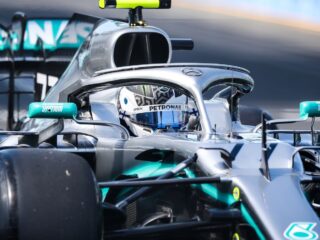
-
Night Sight feature revolutionizes low-light photography.
-
Top Shot selects the best moment from motion photos.
-
Optical Image Stabilization ensures crisp shots even with shaky hands or high-speed action.
These features combined make it an excellent choice for sports photographers or fans aiming to capture every exhilarating moment of F1 races.
Design and Build
Google’s Pixel 3 XL sports an elegant design characterized by its soft-touch glass back which not only adds sophistication but also aids in wireless charging—a handy feature for those always on-the-go at events like F1 races where time is of essence. Despite its large screen size, it remains comfortable to hold thanks to well-thought-out dimensions and weight distribution.
Display
The display on this device is nothing short of impressive; offering a resolution of 2960 x1440 pixels which translates into sharp images that are crucial when reviewing detailed scenes or analyzing pixel-perfect F1 2019 images captured during the heat of racing moments. Furthermore:
-
OLED technology provides deep blacks & vibrant colors.
-
Corning Gorilla Glass 5 offers durability against drops & scratches.
-
An aspect ratio of 18:5:9 grants immersive viewing experiences whether watching replays or live streams from trackside events.
This combination ensures that every image displayed retains its visual integrity—be it fast-moving cars on tracks or static shots showcasing team celebrations post-race—all through the lens of your Pixel 3 XL
Image Quality Comparison
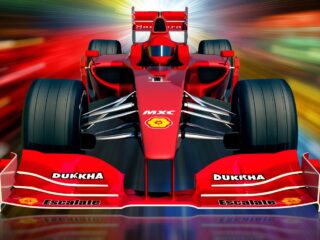
Daylight Shots
Capturing daylight shots is often seen as a benchmark for evaluating a smartphone camera’s quality. The Pixel 3XL shines in this domain, leveraging its HDR+ technology to produce images with outstanding dynamic range and color accuracy. A side-by-side comparison with its contemporaries reveals that the Pixel 3XL manages to retain details even in challenging bright and shadowed areas simultaneously.
-
Detail Retention: In direct sunlight, many phones struggle to balance exposure across the frame. However, the Pixel 3XL’s software algorithms excel at parsing fine details without overexposing skies or underexposing shaded areas.
-
Color Reproduction: Natural and vivid are terms frequently associated with the Pixel 3XL’s daylight imagery. Colors pop without seeming oversaturated—a delicate balance not every device can achieve.
Photographers who favor landscape or urban photography will find the Pixel 3XL’s sensor adept at capturing sprawling scenes with minimal loss in fidelity.
Low-Light Performance

-
Night Sight: This mode allows users to capture remarkably clear images under low-light conditions without resorting to flash which can disrupt natural ambiance.
Images taken with Night Sight exhibit less noise compared to competitors’ night modes while pulling impressive detail from seemingly pitch-black settings.
|
Feature |
Pixel 3XL |
Competitors |
|---|---|---|
|
Detail |
High |
Moderate |
|
Color Accuracy |
Excellent |
Good |
|
Noise |
Minimal |
Noticeable |
It’s noteworthy how well the pixel algorithm excels at discerning and enhancing subjects without introducing artificial sharpness or unwanted artifacts. Whether it’s dimly lit streets or indoor events with subtle lighting, the phone adapts swiftly ensuring users don’t miss capturing those precious moments due to poor lighting conditions.
Comparison with Previous Models
Pixel 2XL vs Pixel 3XL
When contrasting the Pixel 2XL and the Pixel 3XL, several improvements become evident, particularly in terms of display and camera capabilities. The Pixel 3XL’s leap in screen technology offers a more vibrant and immersive viewing experience, perfect for scrutinizing every detail in a pixel 3xl f1 2019 image. This model boasts a higher resolution and an aspect ratio that brings visuals to life more than its predecessor.
-
Display: The transition from the Pixel 2XL to the Pixel 3XL saw an upgrade in both size and quality. Users enjoyed a larger screen with better resolution, making activities like photo viewing and video streaming noticeably superior.
-
Camera: Although both models excel in photography, the Pixel 3XL introduced new features that enhanced picture quality even further. With improved HDR+ capabilities, night sight for low-light conditions, and a group selfie mode, capturing a detailed pixel 3xl f1 2019 image became effortlessly achievable.
Performance-wise, both phones deliver robust performances; however, thanks to updated hardware specs, the Pixel 3XL edges out its older sibling slightly. It handles multitasking and high-demand apps with ease—a crucial factor for anyone prioritizing speed and efficiency.
Pixel 3 vs Pixel 3XL
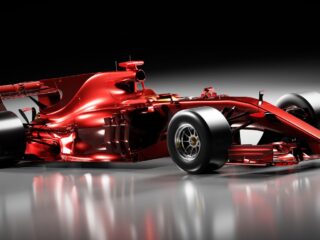
-
Screen Size: For enthusiasts seeking to enjoy vibrant F1 images or any visually intensive content without compromise on portability, choosing becomes a matter of personal preference related to screen real estate.
-
Battery Life: With its larger frame comes increased battery capacity for the Pixel 3XL. Users can expect longer usage times which is beneficial when browsing through extensive galleries of pixel 3xl f1 2019 image without worrying about reaching for a charger too soon.
In essence, deciding between the regular-sized model or opting for the XL variant boils down to how one values display dimensions against handling comfort. Both versions stand out as premium devices capable of showcasing detailed imagery such as pixel f1 photos from various angles—each providing an unparalleled view into high-speed automotive excellence encapsulated within every captured moment.
Comparison with Other Devices
Pixel 3 XL vs. iPhone XS
When comparing the Pixel 3 XL’s ability to capture stunning F1 2019 images to that of the iPhone XS, several key differences emerge. The Pixel 3 XL boasts a single rear camera setup renowned for its computational photography prowess, which significantly enhances photo quality through software optimization. This contrasts with the dual-camera system of the iPhone XS, which relies more on hardware capabilities to produce high-quality images.
-
Camera Quality: The Pixel 3 XL utilizes Google’s HDR+ technology, offering superior dynamic range and low-light performance in capturing F1 2019 events. Meanwhile, the iPhone XS benefits from Smart HDR, balancing shadows and highlights for more detailed photos.
-
Software Features: Night Sight on the Pixel 3 XL stands out for its remarkable ability to illuminate dark scenes without a flash, making it ideal for capturing late-night races or dimly lit showcases during F1 events. On the other hand, the iPhone XS features an advanced Portrait mode with depth control allowing users to fine-tune the background blur (bokeh) after taking a shot.
The table below summarizes their camera specifications:
|
Feature |
Pixel 3 XL |
iPhone XS |
|---|---|---|
|
Rear Camera |
Single 12.2 MP |
Dual 12 MP |
|
Aperture |
f/1.8 |
f/1.8 & f/2.4 |
|
Optical Image Stabilization |
Yes |
Yes |
|
Software Enhancement |
HDR+, Night Sight |
Smart HDR, Depth Control |
Photography enthusiasts often debate over these devices’ color accuracy and image processing styles; while some prefer the warmer tones and sharper details produced by the pixel 3xl f1 2019 image, others might lean toward the natural colors and smooth textures seen in photos taken by the iPhone XS.
Pixel 3 XL vs. Samsung Galaxy S10
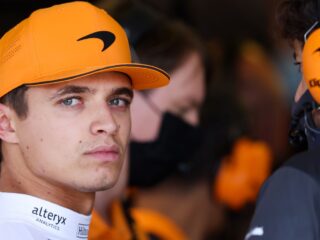
-
Display Technology: First off is how each device handles display technology—important not just for taking pictures but also reviewing them post-capture. The Galaxy S10 features Dynamic AMOLED display technology providing vibrant colors and deep blacks which can make reviewing those fast-paced F1 snapshots a joy.
-
Camera Setup: While both phones offer impressive photo-taking capabilities perfect for grabbing that speedy shot at an F1 race, they approach this task differently hardware-wise. The Galaxy S10 steps up with a triple rear camera setup – wide-angle lens included – against Pixel’s single-lens arrangement.
-
Software Capabilities: Both devices come packed with software tricks up their sleeves enhancing their image capturing abilities under various conditions; however, Google’s AI-driven algorithms like Top Shot suggest better shots by analyzing and recommending alternatives which can be quite handy during fast-moving scenes common in Formula One races.
Here’s how they stack up on paper:
|
Feature |
Pixel 3 XL |
Samsung Galaxy S10 |
|---|---|---|
|
Screen Type |
P-OLED |
Dynamic AMOLED |
|
Rear Camera Setup |
Single:12.2 MP |
Triple:12 MP +12 MP +16MP |
|
Aperture (Primary Lens) |
|
|
It becomes clear through this analysis that while each smartphone has distinct advantages – be it Samsung’s versatile three-lens array or Google’s computational photography smarts – potential buyers would need to weigh what aspects of mobile photography are most important to them especially when it comes down to capturing those thrilling moments at an F1 race event in vivid detail.
Tips for Capturing the Best Images
Photography enthusiasts and professionals alike know that capturing the perfect shot often requires more than just pointing and shooting. With the Pixel 3XL, especially when aiming to capture stunning F1 2019 images, leveraging specific features and adjusting settings can make all the difference. In this section, we’ll delve into how to utilize Night Sight mode effectively and adjust camera settings for optimal results.
Utilizing Night Sight Mode
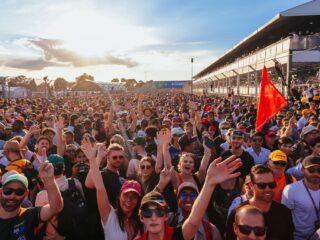
-
Understand When to Use It: Night Sight isn’t just for pitch-black environments. It’s also incredibly effective during twilight hours or in shaded areas where light is present but not overwhelming.
-
Steady Your Hands or Use a Tripod: For best results, keeping your phone as still as possible ensures that the software enhances your image without blur. If you’re serious about F1 2019 photography at dusk or night races, investing in a small tripod could significantly improve your outcomes.
-
Be Patient: The processing time for Night Sight images is longer than standard shots due to the advanced software algorithms at work. Give it those extra seconds to process; you’ll be rewarded with an eye-catching result.
The impact of using Night Sight can turn an otherwise muted scene into a vivid memory captured in your gallery.
Adjusting Camera Settings
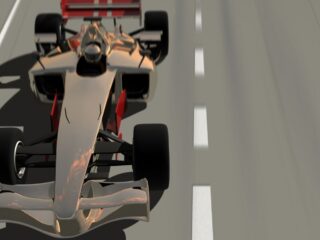
-
Focus on Focus: Tap on your subject on the screen to ensure the camera focuses correctly before taking a shot. For moving subjects like racing cars, tracking focus might help keep them sharp in your photos.
-
Exposure Compensation Is Key: Play around with exposure compensation (the +/- icon) to find the right balance between shadows and highlights. This adjustment can be crucial during daytime races where sunlight varies dramatically across different parts of the track.
-
HDR+ Enhanced Mode: Ensure HDR+ enhanced mode is activated for high contrast scenes. This feature takes multiple shots at different exposures and combines them for an image with balanced lighting and detail.
By mastering these adjustments, enthusiasts will find themselves capturing Pixel 3XL F1 2019 images that stand out both in terms of clarity and vibrancy—whether it’s capturing the intensity of a night race under artificial lights or freezing a moment of action under bright skies.
Specifications of Pixel 3XL
The Google Pixel 3XL, with its stunning visuals and top-tier features, continues to be a favorite among tech enthusiasts. When diving into the specifics, it’s clear why this device has garnered such acclaim.
Display
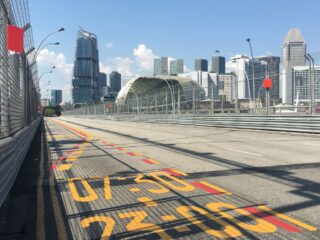
-
Aspect Ratio & PPI: With an aspect ratio of 18.5:9 and a pixel density of approximately 523 PPI (pixels per inch), users enjoy both wide viewing angles and sharp visuals.
-
Color Accuracy: Enhanced color accuracy makes for vivid yet natural colors, ensuring that whether you’re browsing photos or watching videos, the output is true-to-life.
The always-on display is another highlight, allowing users to glance at essential information without waking up their device fully—a handy feature for those constantly on the go.
Camera
Photography enthusiasts have long praised the Pixel line for its camera capabilities, and the Pixel 3XL is no exception. Its rear camera setup might seem modest at first glance—it houses a single 12.2 MP lens—but underestimating it would be a mistake.
-
Software Magic: What sets it apart is Google’s software optimization; leveraging AI and machine learning algorithms, it produces some of the best photographs seen on smartphones.
-
Night Sight: The Night Sight mode deserves special mention; transforming low-light scenes into brightly lit images without needing a flash is nothing short of impressive.
Selfie lovers aren’t left out either; dual front cameras (8MP each) offer both standard and wide-angle shots—perfect for group selfies or capturing expansive backgrounds.
Performance

|
Component |
Specification |
|---|---|
|
CPU |
Qualcomm Snapdragon 845 |
|
GPU |
Adreno 630 |
|
RAM |
Available in both 4GB versions |
|
Storage Options |
Choices between a spacious 64GB or an ample128GB |
This combination ensures smooth multitasking and quick app launches—even demanding games run flawlessly on this device. Additionally, Google’s commitment to providing timely software updates means that the Pixel 3XL consistently benefits from new features and security enhancements.
Battery life remains commendable; though not industry-leading, adaptive battery technology learns your usage patterns to maximize power efficiency throughout the day. Coupled with fast charging support, keeping powered up becomes less of a hassle.
Incorporating these specifications into daily use cases—from capturing breathtaking images during F1 races to enjoying high-definition streaming—the Pixel 3XL proves itself as not just any smartphone but an emblem of what modern technology can achieve when harnessed correctly.
Pros and Cons of Pixel 3XL F1 2019 Image
 Advantages
Advantages
The Pixel 3XL F1 2019 image boasts several noteworthy advantages that merit attention. First and foremost, the device’s camera quality stands out. Google’s commitment to photography means users enjoy stunningly clear and detailed images, with the Pixel 3XL being no exception. The F1 2019 imagery captured on this device is often vibrant, capturing the essence of high-speed racing with astonishing clarity.
Another significant advantage is the Night Sight feature. This allows for impressive low-light photography, making it possible to capture the exhilaration of night races without losing detail or clarity. Users rave about its ability to produce bright, clear photos even in challenging lighting conditions.
Moreover, the HDR+ technology automatically enhances color and lighting in each shot, ensuring that every photo looks professionally taken. Whether it’s capturing the dynamic colors of a racer’s helmet or the intricate details of a Formula 1 car at full speed, the Pixel 3XL excels.
-
Camera Quality: Exceptional detail and vibrancy.
-
Night Sight Feature: Outstanding low-light performance.
-
HDR+ Technology: Automatically optimizes photos.
Disadvantages
However, there are some drawbacks to consider as well. One notable disadvantage is battery life when extensively using camera features like Night Sight or capturing videos in high definition. These activities can drain battery significantly faster than typical usage patterns might suggest.
Storage space can also pose a challenge for avid photographers or F1 enthusiasts who wish to keep an extensive collection of race day memories on their device. While cloud storage options exist, they’re not always convenient for quick access or sharing when offline.

-
Battery Life: Drains quickly with intensive camera use.
-
Storage Space: Limited for large photo collections.
-
User Interface: Can be less intuitive for beginners.
In summary while offering exceptional imaging capabilities especially suited for capturing fast-paced action like Formula 1 racing events; certain limitations such as battery longevity and storage management should be considered by prospective users keen on documenting their favorite sporting moments through photography
F1 2019 Game Graphics
Visual Enhancements
The release of F1 2019 brought with it a slew of visual enhancements that have significantly elevated the gaming experience for players across the globe. One standout feature is the remarkable quality of images, especially when viewed on devices like the Pixel 3XL. The Pixel 3XL F1 2019 image quality showcases an impressive leap in graphical fidelity, offering razor-sharp resolutions and vibrant colors that make every race feel alive.
Developers have pushed the envelope by incorporating advanced lighting models and detailed textures that mimic real-world environments with astonishing accuracy. Players can notice reflections on car surfaces, nuanced weather effects, and even rubber debris on tracks, all contributing to an immersive racing atmosphere. Such attention to detail ensures each circuit presents a unique visual challenge, enhancing realism.
Moreover, night races in pixel 3xl f1 2019 image are a spectacle to behold. Enhanced lighting techniques create dynamic shadows and highlight intricate details of the cars and tracks under floodlights. This makes night events not only visually stunning but also adds a layer of complexity to gameplay as visibility changes.
Gameplay Experience

Handling models have also received updates based on player feedback from previous titles. These tweaks ensure cars respond more realistically to inputs and track conditions, delivering a satisfying sense of control at high speeds or while navigating tight corners.
Multiplayer modes benefit greatly from enhanced graphics as well. With better synchronization and reduced latency, players can engage in closely fought battles without worrying about technical hitches disrupting their race. This seamless integration between visual excellence and stable online play creates thrilling competitions among friends or against racers worldwide.
In essence, F1 2019 stands out not just for its visual prowess showcased beautifully on devices like Pixel 3XL but also for how these visuals synergize with gameplay mechanics to deliver an unparalleled racing simulation experience.
Performance Comparison
When diving into the realm of smartphone technology, particularly focusing on the pixel 3xl f1 2019 image, it’s essential to dissect two core components: the processor and RAM/storage capabilities. These elements are pivotal in understanding how this device stacks up against its contemporaries.
Processor

-
Snapdragon 845 features include:
-
An octa-core configuration
-
Adreno 630 GPU for superior graphics
-
Up to 2.8 GHz clock speed for swift app launches and multitasking
-
Comparing this with other smartphones released around F1 2019 season reveals that while newer models might have incorporated more advanced processors like the Snapdragon 855 or even the A12 Bionic from Apple, the Pixel 3XL still holds its ground in terms of raw processing capability. Its ability to handle demanding applications and games remains commendable.
RAM and Storage
Another crucial aspect when examining a phone’s performance is its RAM and storage options. They determine not just how many apps you can run smoothly but also how much content you can store without worrying about space constraints.
The Pixel 3XL offers a robust setup with:
-
RAM: Available in a single variant – 4GB.
-
Storage Options: Two variants – either 64GB or 128GB of internal storage.

In terms of competing devices from around F1 season in early months of ’19’, many were starting to offer higher base RAM sizes (6GB or even up) and more generous storage capacities (up to or exceeding256GB). However, it’s paramount to consider real-world usage scenarios where these numbers translate into tangible benefits. Users value seamless user experience which Google delivers through software optimization over sheer hardware specs alone.
User Experience
Operating System
The Pixel 3XL, with its showcase of the F1 2019 image, offers users an immersive experience that’s both visually stunning and operationally seamless. At the heart of this device is the Android operating system, which is known for its user-friendly interface and customizable features. Users revel in the fluidity with which they can navigate through apps, manage their settings, and personalize their screens.
Android’s latest updates ensure that Pixel 3XL owners enjoy top-notch performance. This includes faster loading times for apps and games, improved battery efficiency ensuring longer usage periods without needing a charge, and enhanced security features that protect users’ data from threats. The integration of Google Assistant further elevates the user experience by enabling voice commands for various tasks like setting reminders or searching the web.
Pixel 3XL’s hardware complements its software beautifully by providing a robust platform for displaying F1 2019 images with remarkable clarity and color accuracy. The device’s OLED screen brings visuals to life, making it a favorite among photography enthusiasts and gamers alike. Its high-resolution display ensures that every pixel of the F1 2019 image is crisp and vibrant.
How to Use Pixel 3XL F1 2019 for Photography
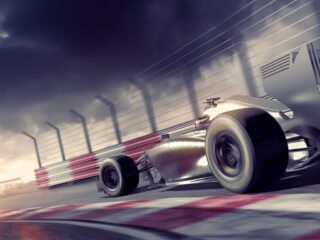
Settings and Modes
The Pixel 3XL is equipped with an array of settings and modes designed to enhance your photography experience. Understanding these options is key to maximizing the device’s potential:
-
Night Sight: Revolutionizes low-light photography by capturing vibrant and detailed images in conditions where other phones struggle.
-
Portrait Mode: Utilizes depth-sensing technology to create a bokeh effect, sharply focusing on the subject while blurring the background.
-
Top Shot: Helps in selecting the best shot from a burst of images, ensuring you never miss a moment due to blinks or unexpected movement.
Experimenting with these modes can significantly improve photo quality. For instance, using Night Sight during dusk or dawn can unveil details lost to human eyes. Similarly, Portrait Mode is perfect for capturing compelling portraits with a professional touch.
Editing Tools
Once the photos are captured, the next step involves refining them using editing tools. The Pixel 3XL comes equipped with powerful onboard editing features:
-
Adjustment Tools: Allow tweaking brightness, contrast, saturation, and warmth to get your photos just right.
-
Pop: Enhances color vibrancy without making the image look unnatural.
-
Depth Editor: Exclusive for portrait shots; it lets users adjust blur intensity around their subject for that perfect bokeh effect.
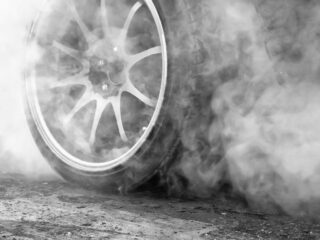
In essence, mastering settings and utilizing editing tools are fundamental steps towards harnessing the full photographic capabilities of the Pixel 3XL F1 2019 image feature set. Whether it’s capturing mesmerizing night skies or crafting engaging content for social media platforms; understanding how to effectively employ each function ensures that every shot is not just captured but truly created.
Comparison between Pixel 3XL and Pixel 4
When diving into the technological advancements between Google’s Pixel 3XL and its successor, the Pixel 4, several key differences become apparent. These distinctions are particularly noticeable in areas such as camera performance, image quality, and night sight mode, which are crucial for photography enthusiasts looking to capture their world with clarity and precision.
Camera Performance
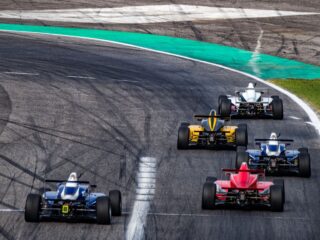
-
Pixel 3XL: Single rear camera
-
Pixel 4: Dual rear cameras (12.2MP + 16MP)
Image Quality
Both devices deliver exceptional image quality; however, improvements in software processing on the Pixel 4 have led to even better results. The newer model benefits from enhanced HDR+ capabilities and dual exposure controls, giving users finer command over shadows and highlights in their photos.
While capturing a pixel 3xl f1 2019 image might yield impressive results due to the device’s adept handling of dynamic range and color accuracy, the Pixel 4 refines this further with its updated algorithms that ensure images are not only vibrant but also remarkably true-to-life.
-
Enhanced color accuracy
-
Improved dynamic range
-
Dual exposure control (Pixel 4 exclusive)
These upgrades make the Pixel series a continually appealing option for mobile photographers seeking top-tier image quality.
Night Sight Mode
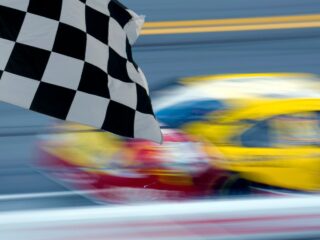
The newer model introduced astrophotography capabilities within Night Sight mode—enabling users to capture breathtaking shots of starry skies which would be difficult or impossible on other smartphones including its predecessor.
Moreover, improvements in white balancing ensure that nighttime photos look more natural by accurately reflecting colors seen by human eyes under low-light conditions—a step forward from what was already considered best-in-class performance from the Pixel line.


 Advantages
Advantages










